
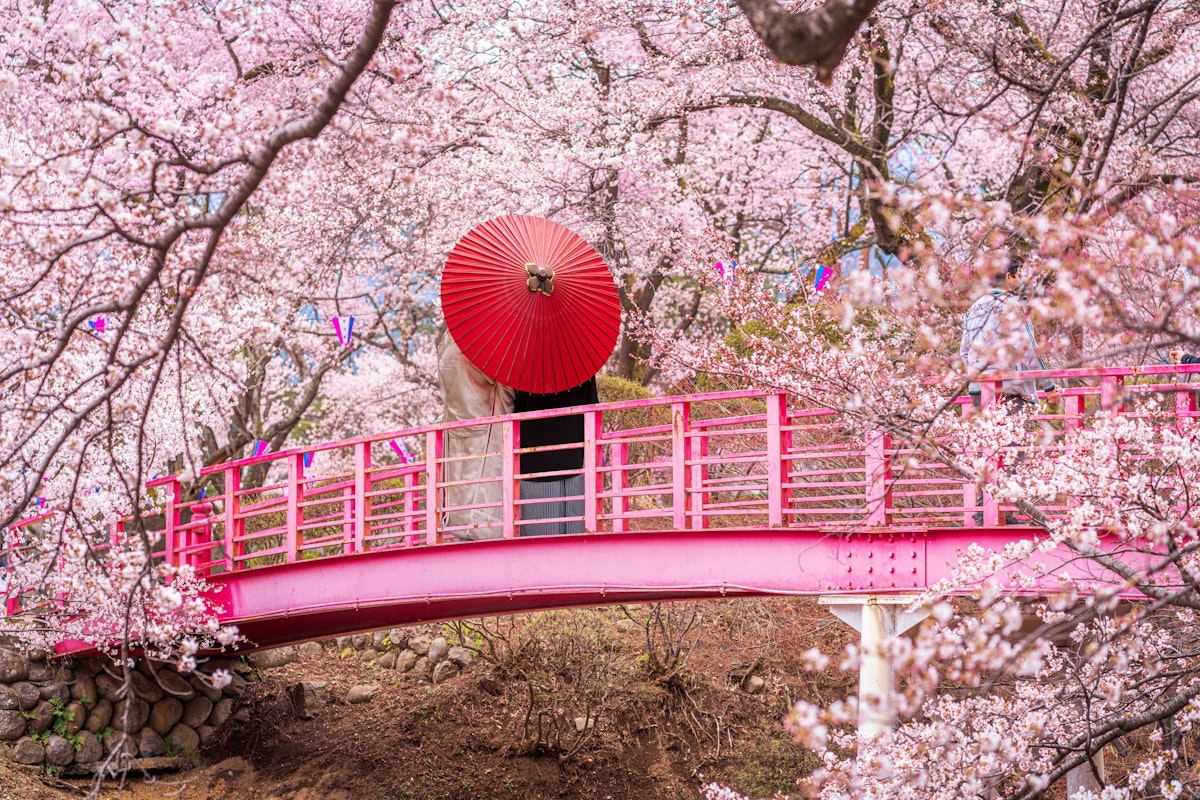
의 도착 일본의 봄 자연의 덧없는 아름다움에 대한 축하, 반성, 감사의 시간을 표시합니다. 일본 문화에서 가장 존경받는 전통 중 하나는 벚꽃을 보는 관습인 하나미입니다.
"꽃구경"을 의미하는 하나미는 수 세기 동안 일본 사회의 일부였습니다. 벚꽃을 즐기기 위해 공원, 개인 정원, 유적지로 사람들을 끌어들입니다.
벚꽃나무가 풍경을 장식하면 현지인과 방문객은 섬세하게 꽃이 만발한 나무 아래에 모여 이른 봄에 꽃을 피우기 전에 피어나는 매화처럼 덧없는 삶의 본질을 기념하는 오래된 의식에 참여합니다. 이 블로그에서는 하나미의 심장부, 하나미를 경험할 수 있는 최고의 장소, 그리고 이 상징적인 봄철 전통을 온전히 즐기기 위한 필수 요소를 살펴봅니다.
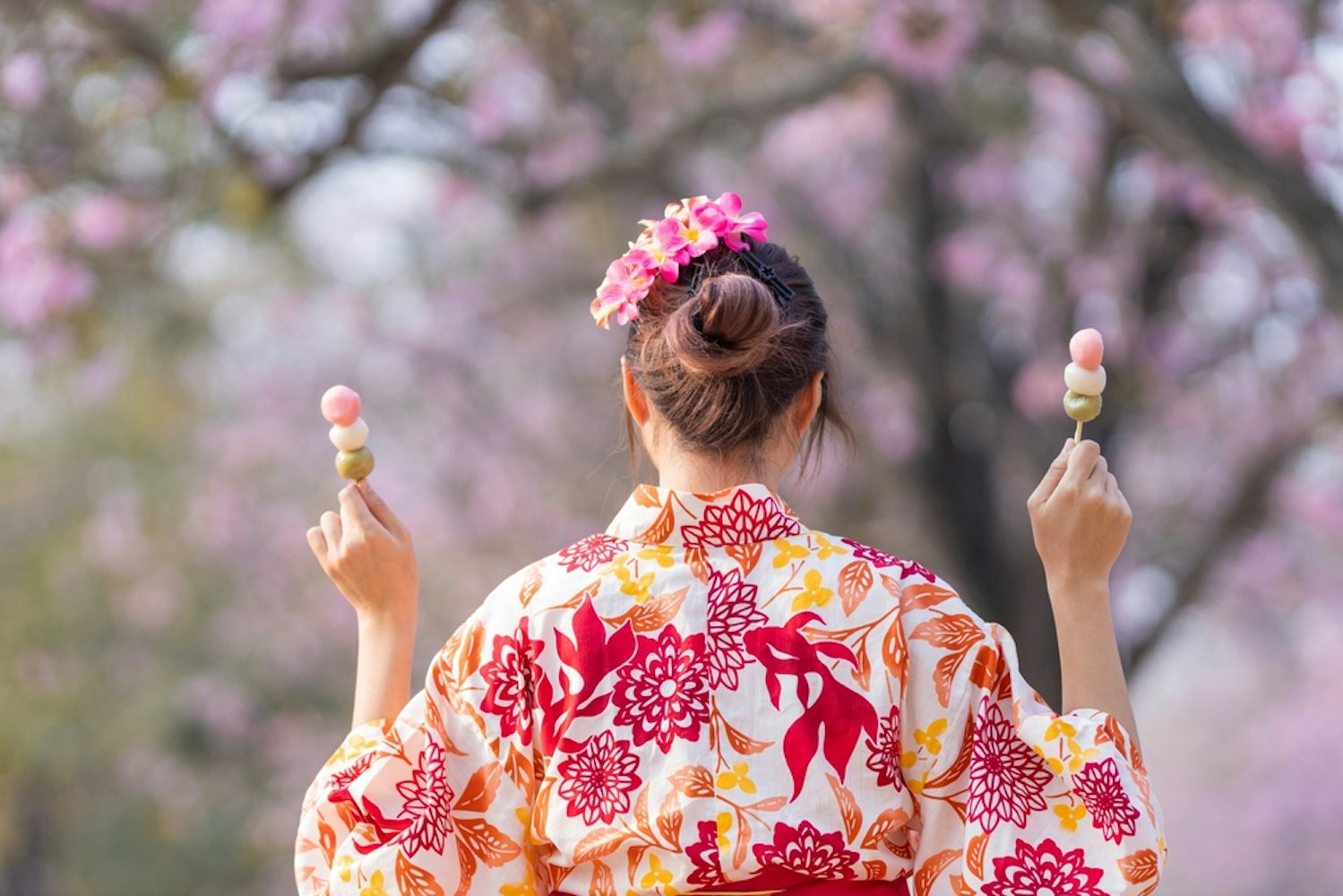
하나미는 벚꽃 나무 아래에 모여 만개한 벚꽃을 감상하는 일본 풍습입니다. 하나미는 나라 시대(710-794)에 시작되었지만, 에도 시대에 대규모 하나미 파티를 통해 모든 사회 계층의 사람들 사이에서 널리 인기를 얻었습니다.
처음에는 황실의 엘리트들만 행하던 관습이었지만, 시간이 지나면서 일본 사회 전체가 즐기는 광범위한 행위가 되었습니다. 이 전통은 "모노 노 어웨어(mono no aware)"라는 개념, 즉 벚꽃의 덧없는 아름다움으로 대표되는 삶의 덧없는 아름다움에 대한 인식을 중심으로 합니다.
일본 전역에서 벚꽃이 만발해지면 일본 전역은 꽃이 만발한 나무를 축하하는 축제로 가득 차고 많은 공원, 사원 및 개인 정원에 사람들이 모여듭니다. 하나미 파티는 친구와 가족이 꽃이 만발한 벚꽃 나무 아래에서 음식과 음료를 즐기는 곳입니다.
벚꽃 축제는 벚꽃의 아름다움을 감상하고 사랑하는 사람들과 함께 봄의 시작을 축하하는 것입니다.
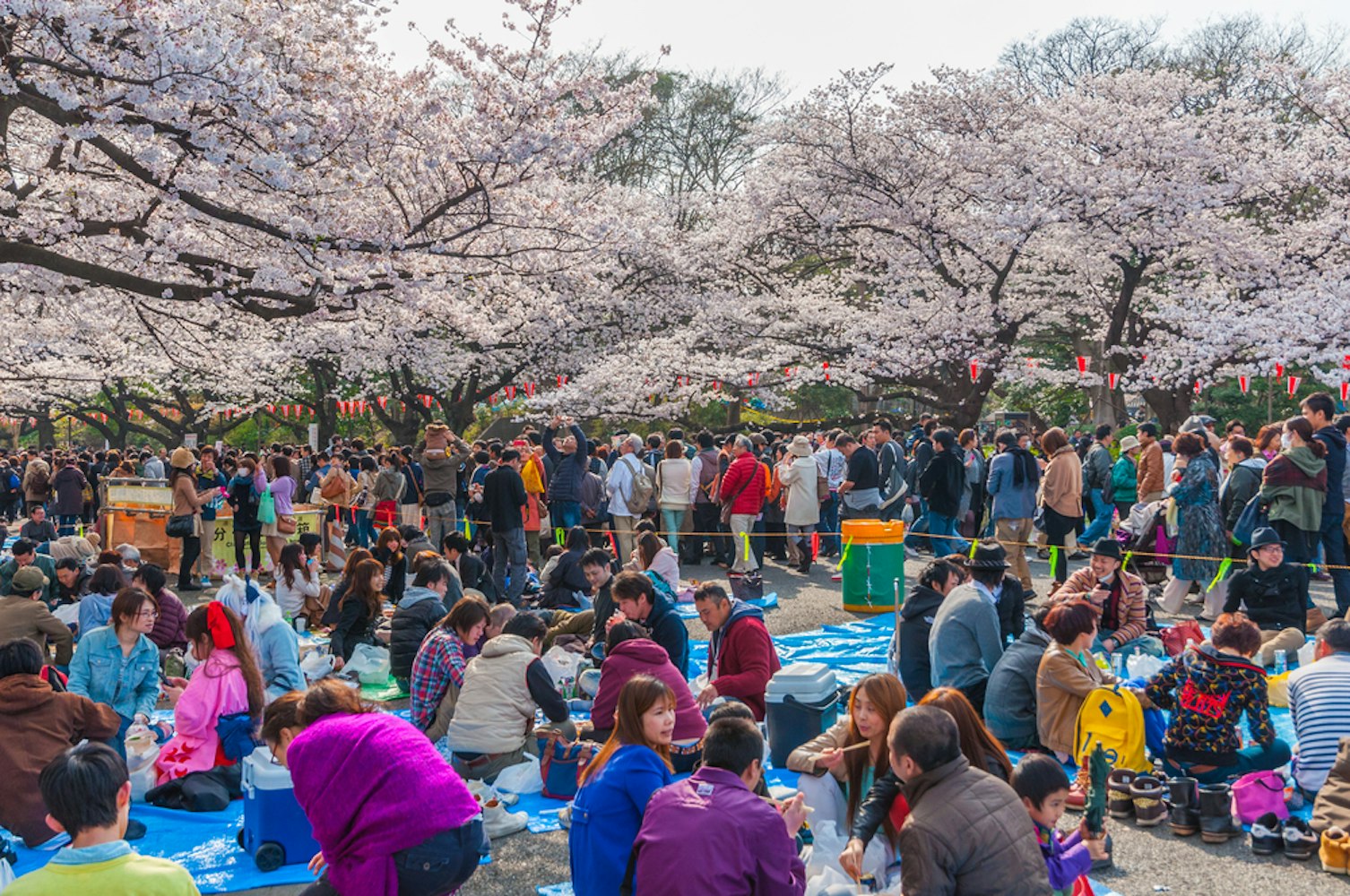
도쿄의 우에노 공원은 오랜 역사와 수많은 벚꽃 나무로 인해 하나미를 경험할 수 있는 가장 상징적인 장소 중 하나입니다. 1,000그루 이상의 벚나무가 공원의 중앙 산책로와 시노바즈 연못 주변을 따라 늘어서 있으며, 일반적으로 만개 기간을 나타내는 4월 초에는 벚꽃이 멋지게 벚꽃을 볼 수 있습니다.
이 공원은 벚꽃 시즌 동안 매년 약 200만 명의 방문객을 끌어들여 일본에서 가장 인기 있고 활기찬 하나미 명소 중 하나입니다. 우에노 공원은 특히 주말에 엄청나게 붐빌 수 있지만, 음식 가판대와 저녁 등불로 완성된 군중의 에너지와 축제 분위기는 기억에 남는 경험을 선사합니다.
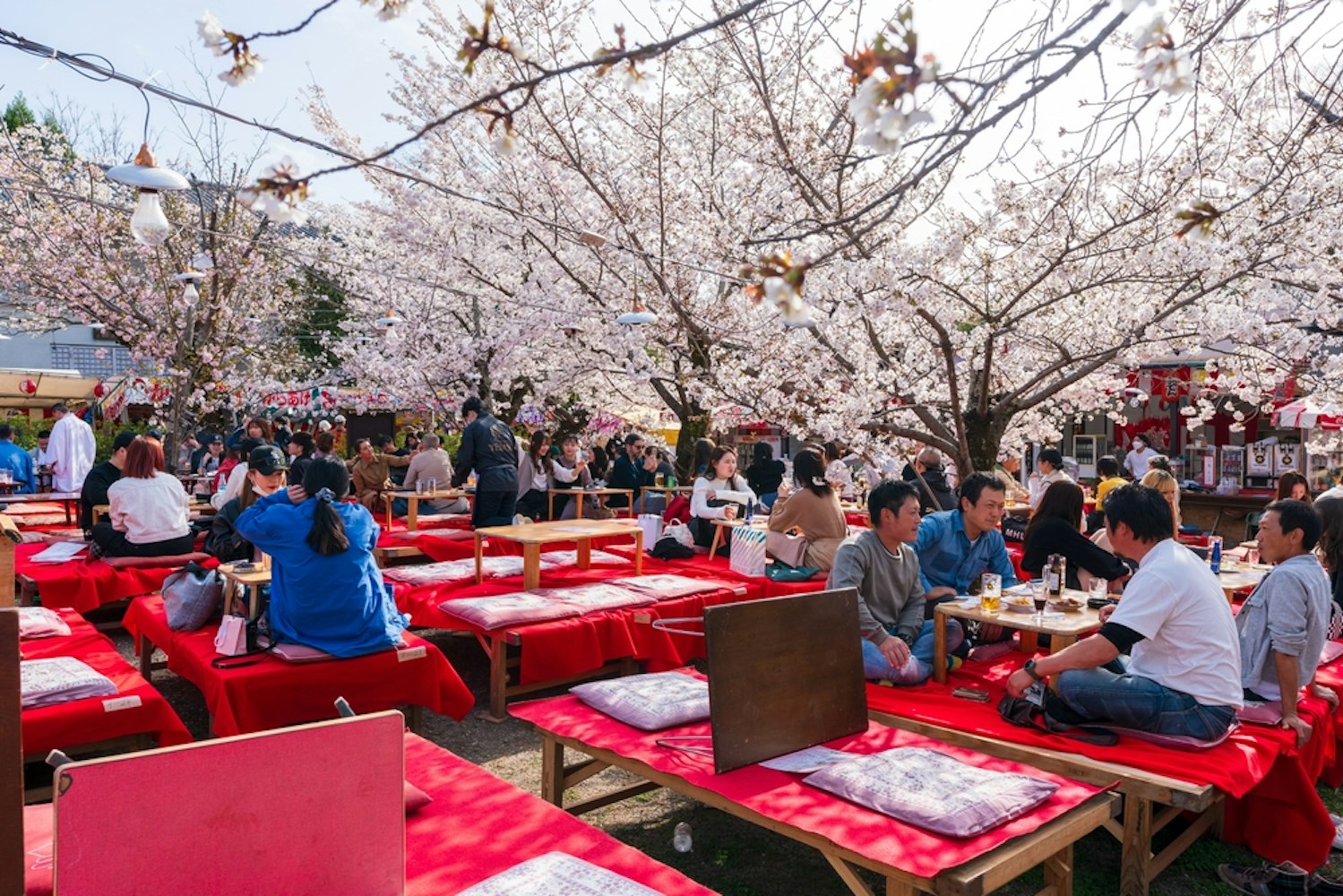
교토의 마루야마 공원은 하나미를 경험할 수 있는 도시에서 가장 유명한 장소 중 하나입니다. 이곳의 중심에는 90년 이상 된 상징적인 수양벚나무인 기온 시다레자쿠라가 있습니다.
계단식 가지를 가진 이 나무는 해질녘부터 자정까지 조명을 밝혀 현지인과 방문객 모두를 끌어들이는 미묘한 빛을 만들어내는 요자쿠라(야간 벚꽃 구경) 기간 동안 더욱 매혹적입니다. 메이지 시대에 조성된 이 공원은 680그루 이상의 벚나무로 둘러싸여 있어 낮에는 하나미 파티를 위한 고요한 분위기를, 밤에는 매혹적인 경험을 제공합니다.
자연의 아름다움 외에도 공원은 음식 가판대와 피크닉 공간이 있는 활기찬 하나미 모임을 개최하여 방문객들이 꽃이 만발한 나무 아래에서 전통 음식과 음료를 즐길 수 있도록 합니다. 붐비는 곳을 피하고 싶은 분들은 이른 아침에 방문하는 것이 좋지만, 마법 같은 분위기를 담기 위해서는 야간 조명도 꼭 봐야 합니다.
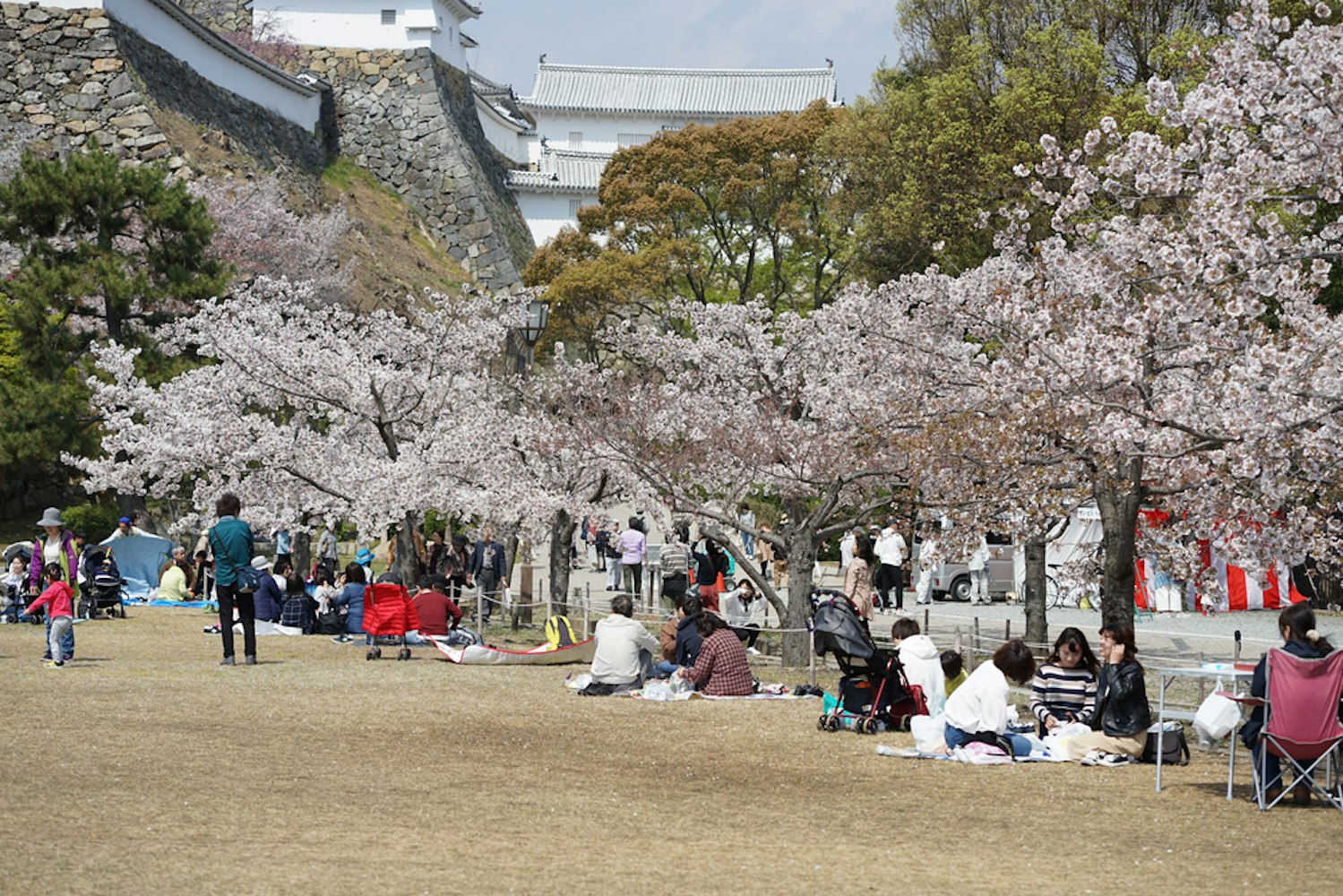
히메지성(姫路城)는 유네스코 세계문화유산으로 지정되어 있으며, 1,000그루 이상의 벚나무가 장엄한 흰색 외관 주변에 피어있는 하나미의 아름다움을 경험할 수 있는 일본에서 가장 멋진 장소 중 하나입니다. 성의 부지는 매년 봄에 1,000그루 이상의 벚나무로 장식되며, 그 중에는 유명한 소메이 요시노 벚꽃도 있습니다.
섬세한 분홍색 벚꽃과 성의 하얀 외관이 대조를 이루는 것은 매혹적인 광경을 만들어 벚꽃을 볼 수 있는 최고의 목적지입니다. 방문객들은 히메지성 벚꽃 축제 기간 동안 낮과 밤의 하나미를 즐기며 전통 다도와 지역 공연과 같은 문화 행사에 참여할 수 있습니다.
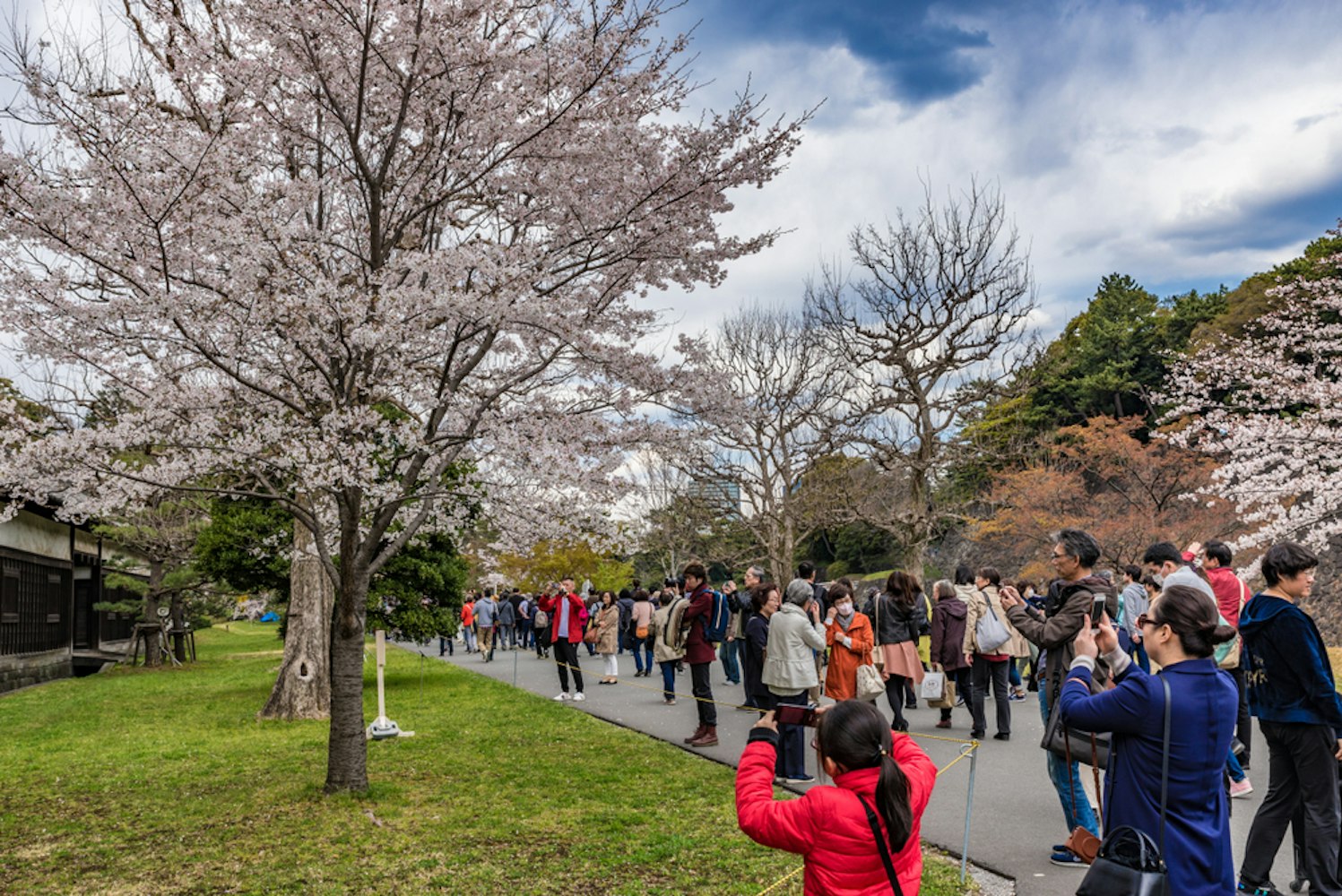
평화롭고 사색적인 하나미 경험을 위해 교토 황궁 정원은 고요한 환경을 제공하여 일반적으로 더 인기 있는 장소에서 볼 수 있는 번잡한 군중을 피하려는 사람들에게 이상적입니다. 이 광대한 공원은, 교토 교엔(京都 京都)에는 상징적인 요시노와 수양벚나무를 포함한 1,000그루 이상의 벚나무가 있습니다.
이 공원은 유서 깊은 교토 황궁을 둘러싸고 있어 벚꽃의 아름다움을 즐기면서 일본 제국의 과거를 엿볼 수 있습니다. 조용한 분위기와 넉넉한 공간은 휴식을 취하고, 피크닉을 즐기고, 만개한 나무의 멋진 전망을 감상하기에 완벽한 장소입니다.
이 공원은 교토의 다른 지역에서 많은 인파에서 벗어나 보다 명상적인 하나미를 찾는 사람들에게 특히 매력적입니다.
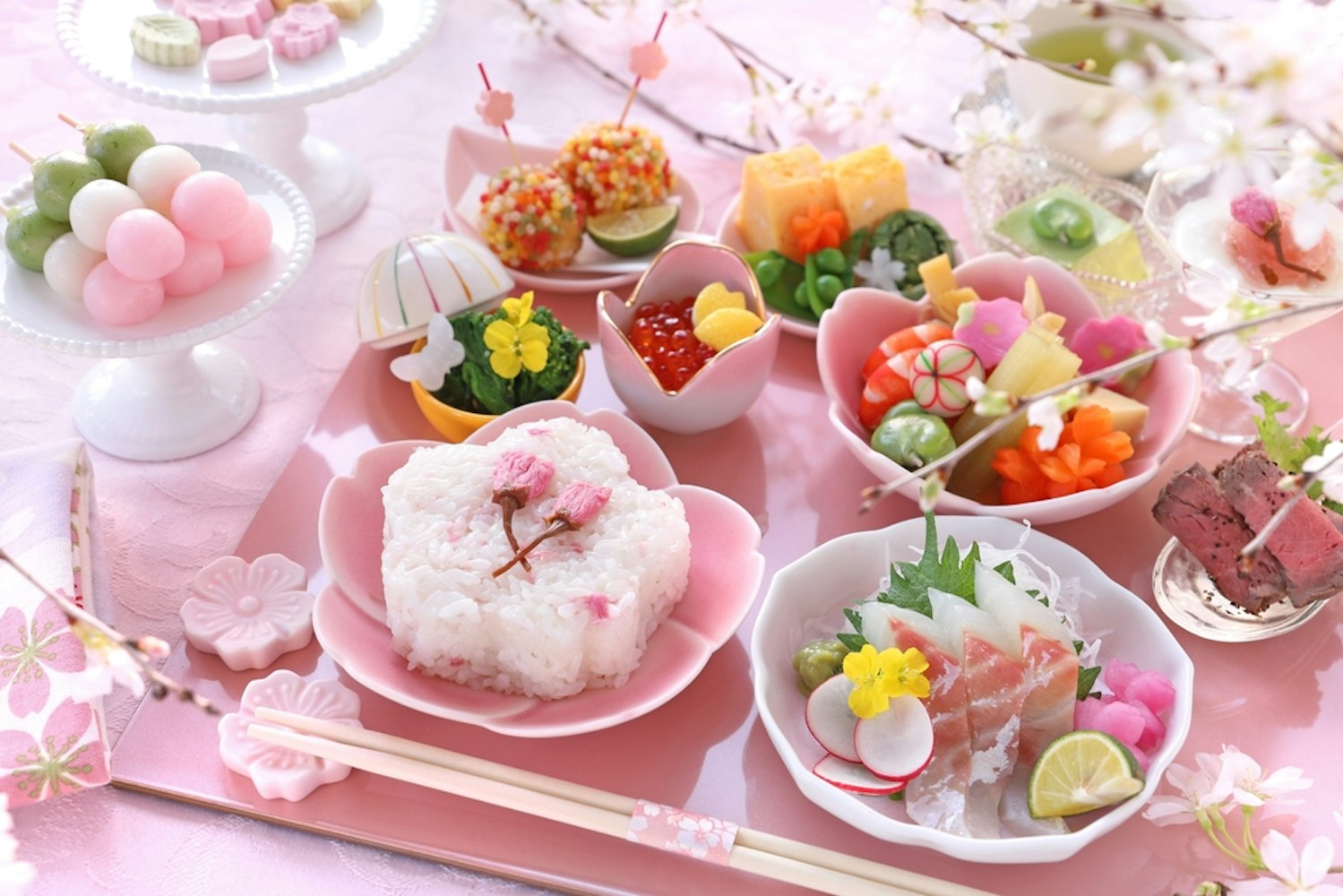
하나미 파티의 중요한 부분은 꽃 구경에 수반되는 음식입니다. 와 관련된 일본 전통 음식 하나미 포함하다:
사쿠라 떡: 소금에 절인 벚꽃 잎으로 감싼 분홍색 떡으로, 벚꽃 자체의 복잡성을 반영하는 단맛과 짠맛의 독특한 균형을 제공합니다.
하나미 경단(花藤臣): 벚꽃은 분홍색, 눈은 흰색, 새 생명을 상징하는 초록색으로 계절의 색을 상징하는 세 가지 색의 쌀 만두.
스시 라이스(Sushi Rice): 하나미 모임에서 인기 있는 피크닉 아이템으로, 구운 생선, 절인 야채, 제철 간식과 함께 도시락에 담겨 제공되는 경우가 많습니다.
공원의 포장마차에서는 타코야키, 야키토리(구운 닭 꼬치), 야키 소바(볶음면) 등 다양한 간식을 판매하며 축제 분위기를 더합니다.
사케, 맥주, 홍차와 같은 음료를 즐길 수 있으며, 하나미 축제 기간 동안 주로 전통 사케가 제공됩니다.
피크닉 매트: 벚꽃 나무 아래의 땅은 축축할 수 있으므로 매트가 있으면 휴식을 취하고 경치를 즐기는 동안 편안함을 보장할 수 있습니다.
쓰레기통: 많은 공원에는 공공 쓰레기통이 없기 때문에 쓰레기 봉투를 가져 오는 것은 자연에 대한 일본인의 존중을 반영하는 배려의 행동입니다.
음식 및 음료: 좋아하는 스낵, 음료, 그리고 사쿠라 떡과 같은 전통 하나미 요리를 가져오세요. 하나미 경단.
따뜻한 옷: 4월 초순의 날씨는 특히 저녁에는 쌀쌀할 수 있으니 옷을 여러 겹 껴입는 것이 좋습니다.
친구 및 가족: 하나미는 친한 친구, 가족, 동료 등 사랑하는 사람과 함께 하는 것이 가장 좋기 때문에 공동 축하 행사입니다.
타이밍이 가장 중요합니다: 벚꽃은 일반적으로 3월 하순부터 5월 중순에 피지만, 지역에 따라 절정을 이룹니다. 도쿄의 우에노 공원과 다른 지역은 일반적으로 4월 초에 만개하며, 홋카이도와 같은 북부 지역은 늦은 봄에 벚꽃이 만개합니다.
일찍 도착하세요: 와 같은 인기 공원의 하나미 명소 교토 황궁 정원(교토) 그리고 우에노 공원은 빠르게 채워집니다. 아침에 도착하면 벚꽃 나무 아래에서 최고의 경치를 볼 수 있습니다.
요자쿠라 체험: 밤의 벚꽃 또는 요자쿠라는 등불이 비추는 꽃이 만발한 나무가 있는 천상의 광경입니다. 마루야마 공원과 같은 많은 공원에는 불이 켜진 벚꽃이 있어 마법 같은 분위기를 자아냅니다.
군중을 피하십시오: 더 조용한 하나미 체험을 위해 주말보다는 더 작고 관광객이 적은 공원을 방문하거나 주중에 가는 것을 고려하십시오.
환경 존중: 항상 스스로 청소하십시오. 대부분의 공원에는 제한된 쓰레기통이 있으므로 다른 사람들을 위해 이 지역을 깨끗하게 유지하기 위해 가방을 가져오세요.
하나미는 삶의 덧없는 자연과 벚꽃의 섬세한 아름다움에 대한 일본의 감사를 요약한 아름다운 전통입니다. 에서 떠들썩한 축하 행사에서 우에노 공원 교토의 고요한 개인 정원에는 이 유서 깊은 관행에 몰입할 수 있는 장소가 부족하지 않습니다.
벚꽃 떡과 같은 전통 음식에 빠져들든 꽃이 만발한 나무 아래에 앉아 있든 하나미는 자연과 지역 사회에 대한 깊은 연결을 제공합니다. 그러니 다음 봄이 다가오면 사랑하는 사람들을 모으고 피크닉을 꾸리고 가장 가까운 사쿠라 나무로 가서 벚꽃의 덧없는 아름다움을 만찬하십시오.
일본에서 하나미를 체험하기 가장 좋은 시기는 언제인가요?
지역에 따라 다르지만 하나미를 체험하기 가장 좋은 시기는 보통 3월 말부터 4월 초까지입니다. 도쿄와 교토의 벚꽃은 보통 4월 초에 만개하며, 홋카이도와 같은 북부 지역은 그 달 말에 벚꽃이 핍니다.
공원에서 하나미를 위한 자리를 예약할 수 있나요?
도쿄의 우에노 공원과 교토의 마루야마 공원과 같은 일본의 대부분의 공원은 특히 꽃이 절정을 이루는 시기에 하나미 명소를 선착순으로 운영합니다.
하나미 시즌에는 어떤 날씨를 예상해야 하나요?
하나미 시즌은 이른 봄에 발생하므로 온화하지만 시원한 기온을 기대할 수 있습니다. 저녁에는 특히 교토와 북부 지역과 같은 곳에서는 쌀쌀할 수 있으므로 옷을 여러 겹 입는 것이 좋습니다.
일본의 모든 공원에서 야간 벚꽃 감상을 즐길 수 있나요?
아니요, 모든 공원에서 야간 벚꽃 감상을 제공하는 것은 아니지만 교토의 마루야마 공원과 도쿄의 우에노 공원과 같은 인기 명소에서는 벚나무가 아름답게 조명되는 요자쿠라를 제공합니다. 일몰 후 하나미를 경험할 수 있는 매혹적인 방법입니다.
하나미 기간 동안 벚꽃 외에 볼 수 있는 다른 종류의 꽃이 있습니까?
네, 벚꽃 외에도 봄에 일찍 피는 매화와 복숭아꽃과 같은 다른 꽃나무도 즐길 수 있어 꽃구경의 대안으로 인기가 있습니다.



